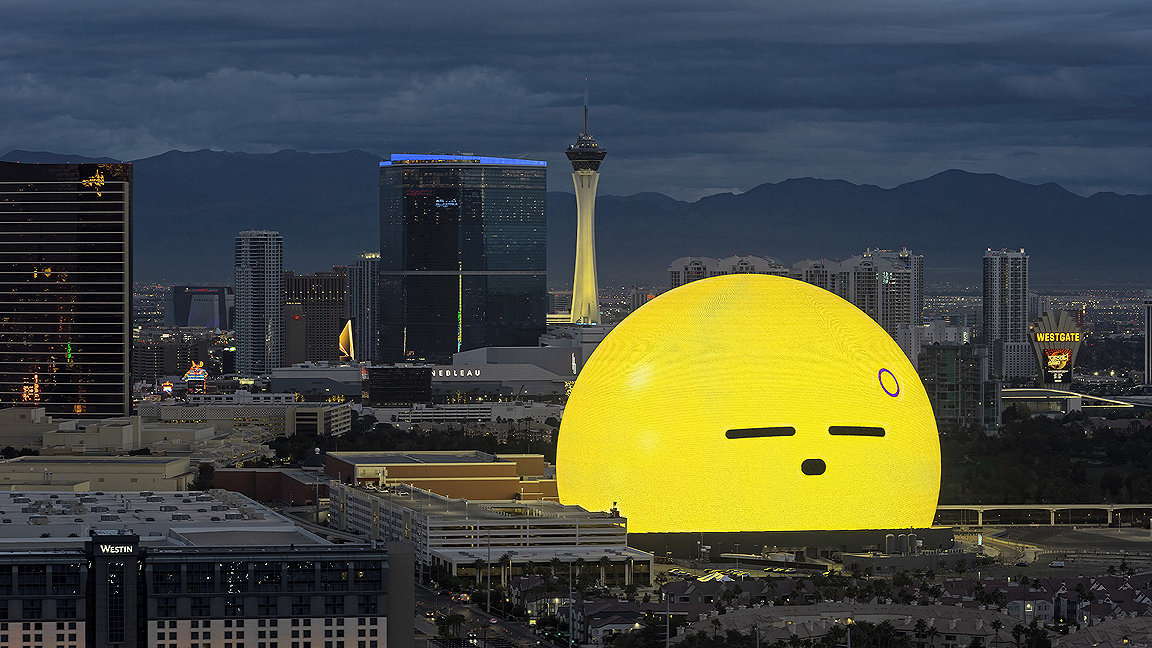
Since it rose from the Nevadan desert in the early 1900s, Las Vegas has always made a big impression.
The Golden Gate Hotel set the tone for future buildings when it opened in 1906. And with the influx of murky mob money, neon frontages and a sprinkle of showbiz talent, the experience for those seeking to gamble (thanks to Nevada’s relaxed laws) got flashier and the architecture more audacious.
Over the course of the past century, the city’s hotels and casinos have migrated south of their traditional home on Fremont Street and have taken up residence on The Strip, a 7km stretch of road just outside Las Vegas’s city limits in Clark County. It’s here where tourists gawp at the replica pirate ship of Treasure Island and have a double-take at the Hilton's Paris Las Vegas hotel, complete with replica Eiffel Tower and Jules Verne hot air balloon.
And it doesn’t stop there; the MGM Luxor that serves as an architectural punctuation mark at the southern tip of The Strip is an homage to all things ancient Egyptian. This Pyramid-shaped hotel emits the Luxor Sky Beam from its point – this beam, the world’s brightest, can be seen from hundreds of miles away.
There are many words to describe Las Vegas and understated isn’t one. Which is why Sphere, since opening in September 2023, feels right at home.
Sphere (just Sphere, no ‘the’), a few blocks north of the airport and tucked one block behind The Venetian at the southern end of The Strip, is the new entertainment venue that has captured the world's imagination. The entire exterior of Sphere is a screen which is proving as entertaining as whatever concert is taking place inside. While what happens inside is for the fee-paying public, the outside is for the world to enjoy.
Since its launch, Sphere has transformed into an eyeball, a basketball and an emoji. All while the venue has hosted acts like U2, who officially opened Sphere as an entertainment venue with a 40-date residency.
But what are the costs of such a huge enterprise – both financial and environmental – of a venue that consumes energy unlike any other? Let’s take a look.
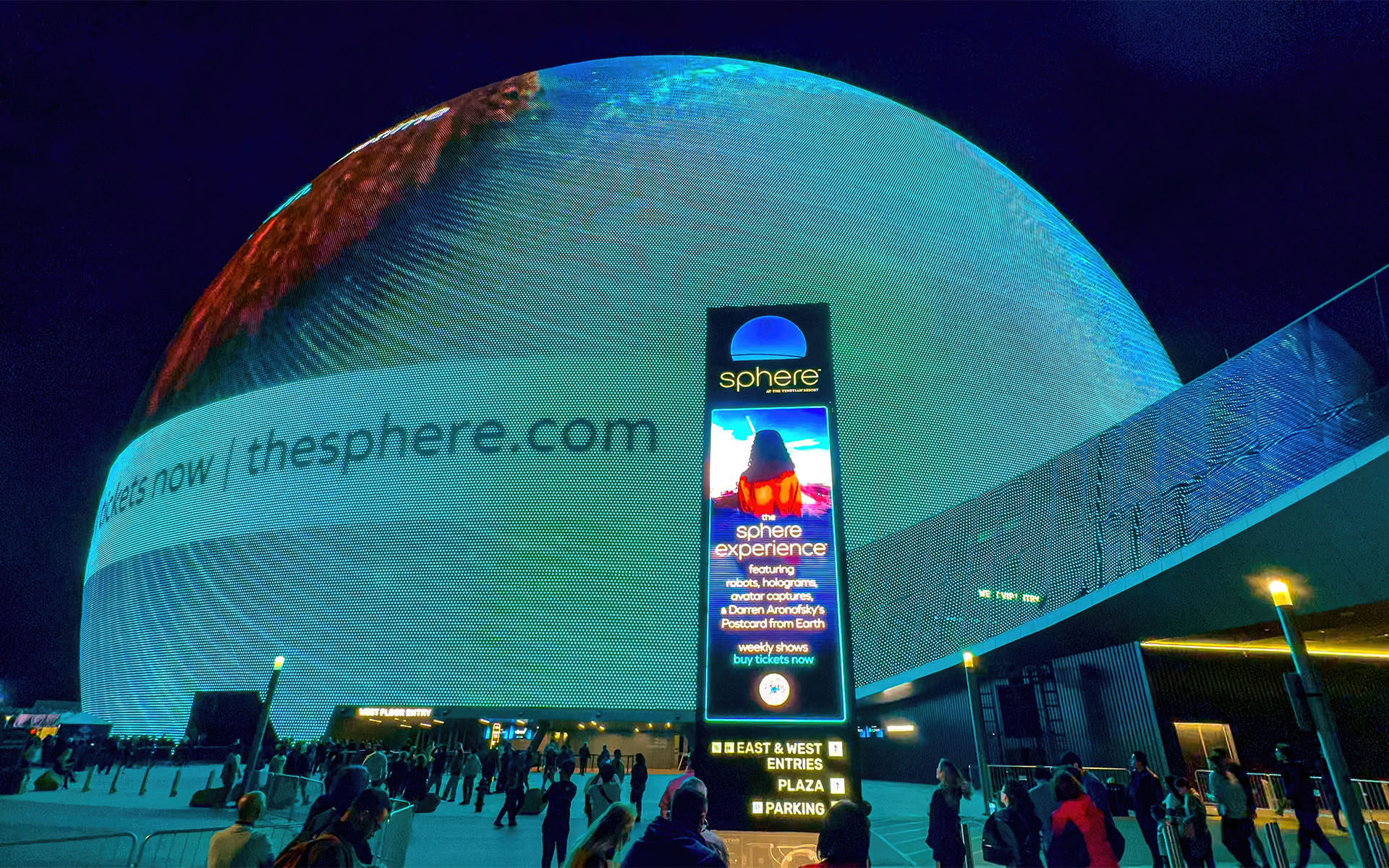
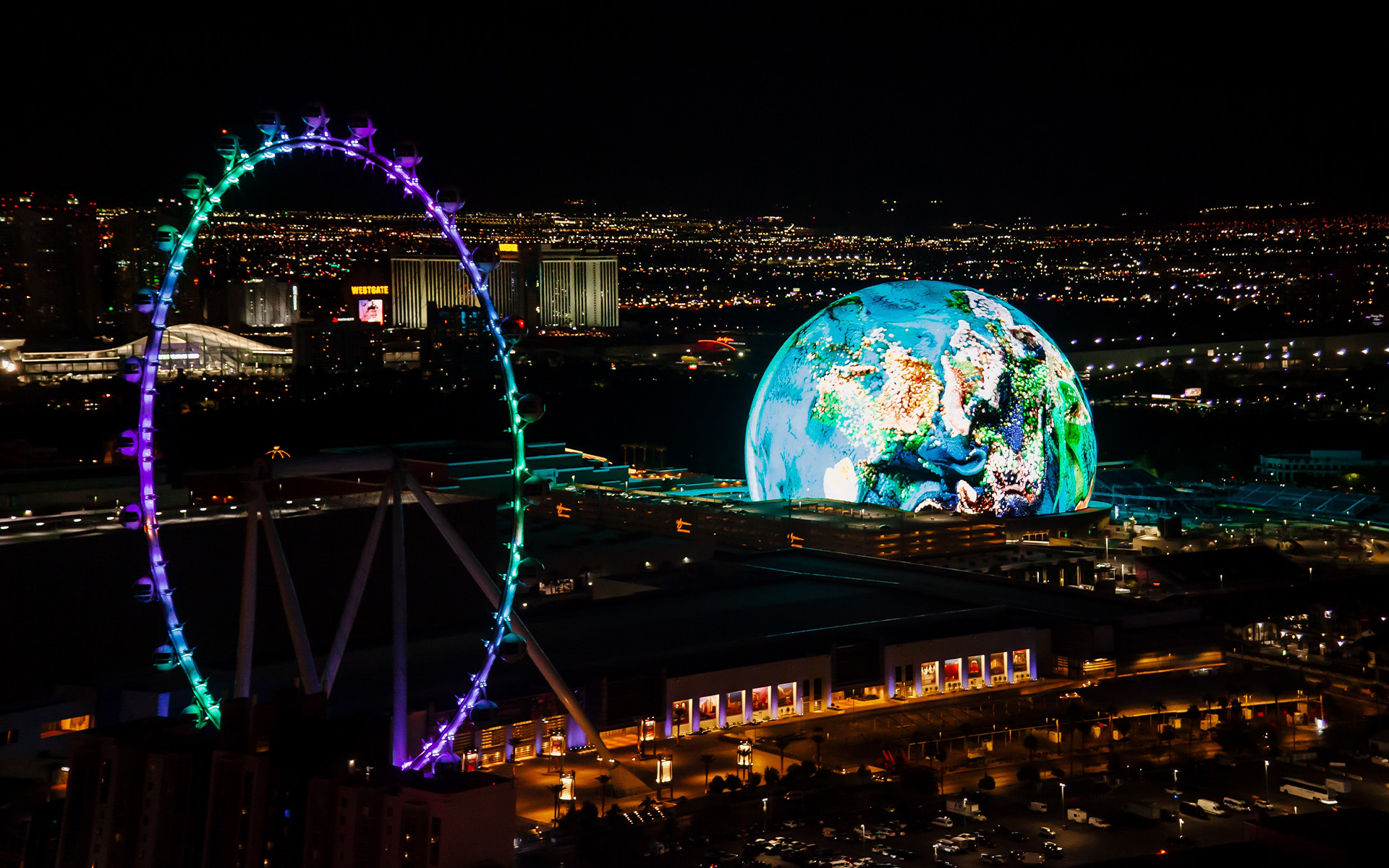
“From the outset, we designed Sphere to minimise environmental impact and to help create a sustainable operation well into the future,” said Rich Claffey, Sphere’s executive vice president and COO.
The people behind Sphere have been consistently tight-lipped around the running costs, profits and sustainability of the venue but its energy consumption shouldn’t be taken lightly.
At its peak, it’s estimated that with all the screens (inside and out), speakers, data processing, heating and cooling needed to run the venue, Sphere will need 28 megawatts of power. One megawatt is enough to power 750 homes in the Nevada/California area, meaning that Sphere’s peak power consumption could power 21,000 homes in the region.
Sphere’s exterior contains 1.2million LED lights
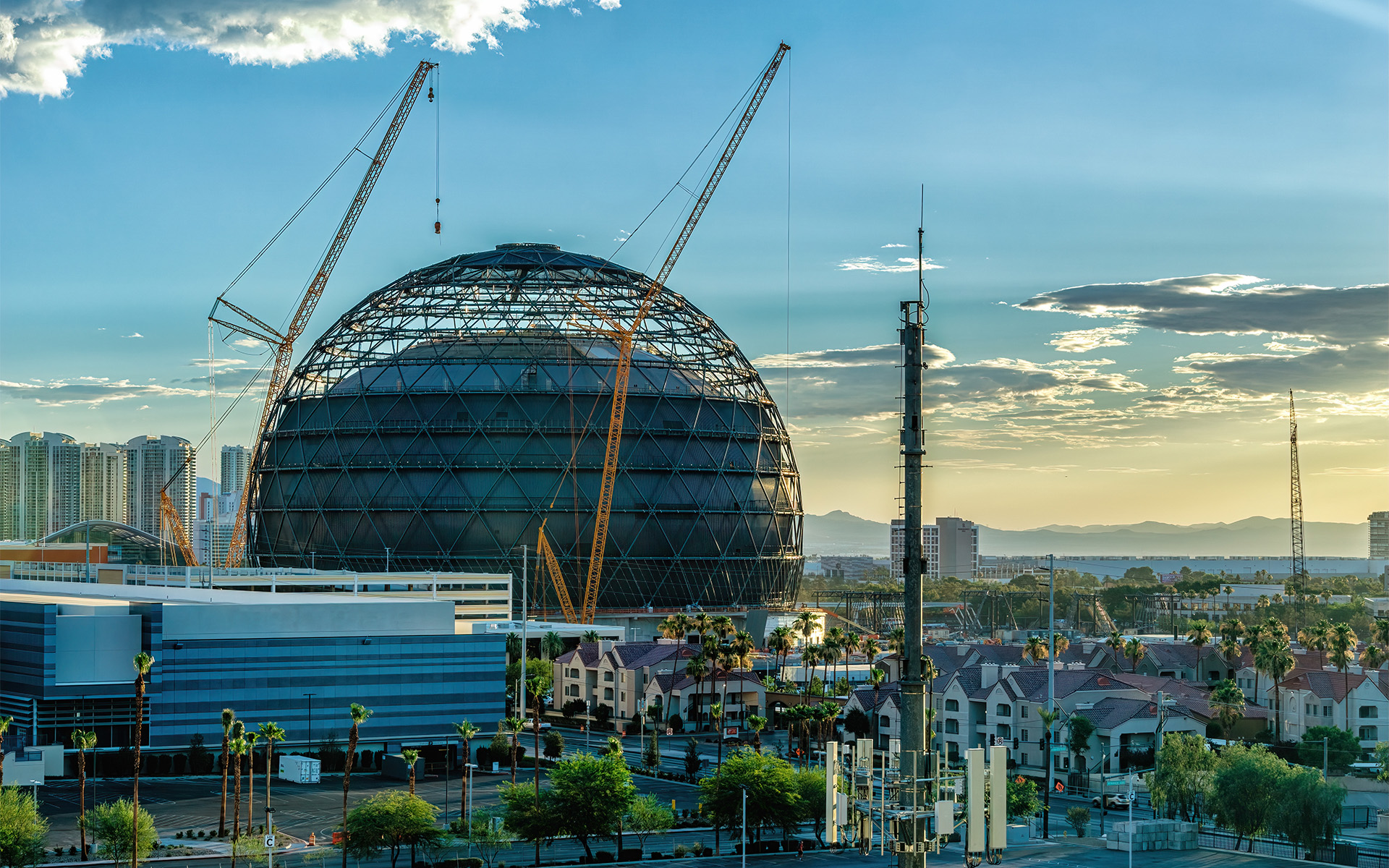
A project of this magnitude needs a bespoke solution – and Sphere has one. Currently in review, under the terms of a 25-year agreement with NV Energy, 70% of the energy consumed by Sphere will come from solar sources, with the Sierra Solar Project providing most of that energy.
Costing $1.4bn, this 400-megawatt photovoltaic project will cover 6.7ha near the Californian border in Churchill County, Nevada with nearly half the costs going towards battery storage capacity.
And what of the remaining 30% of the energy needed? Assurances have been given that energy from non-renewable sources will be offset through renewable energy credits. Details of how this system will work remain under discussion.
Completion date for the entire solar project is 2027; with little word on the energy plans before then, it’s assumed Sphere will offset more of its energy used while it waits for its solar solution to come online.
Such high energy consumption poses a sustainability dilemma for those cities with aspirations of hosting a Sphere of their own. Not every site has the space or weather for a bespoke solar park, nor the energy infrastructure to support a nightly rhythm of 28 megawatts of energy use for what is ostensibly a glorified advertising hoarding and entertainment venue.
“Nevada has pledged to achieve net zero emissions of greenhouse gases by 2050 and Sphere highlights how, even with its access to a large solar facility, it still needs to offset to achieve its [renewable] energy goals,” says James Kavanagh MRICS, head of land and resources at RICS.
“Carbon offsetting is a major and increasingly important element in helping the built environment achieve net zero. Essentially it will be impossible to achieve our climate mitigation goals without it. At the same time we must remember that carbon offsetting does not negate the need to decarbonise buildings and become more energy efficient.”
“Sphere highlights how, even with its access to a large solar facility, it still needs to offset carbon to achieve its energy goals” James Kavanagh MRICS, RICS
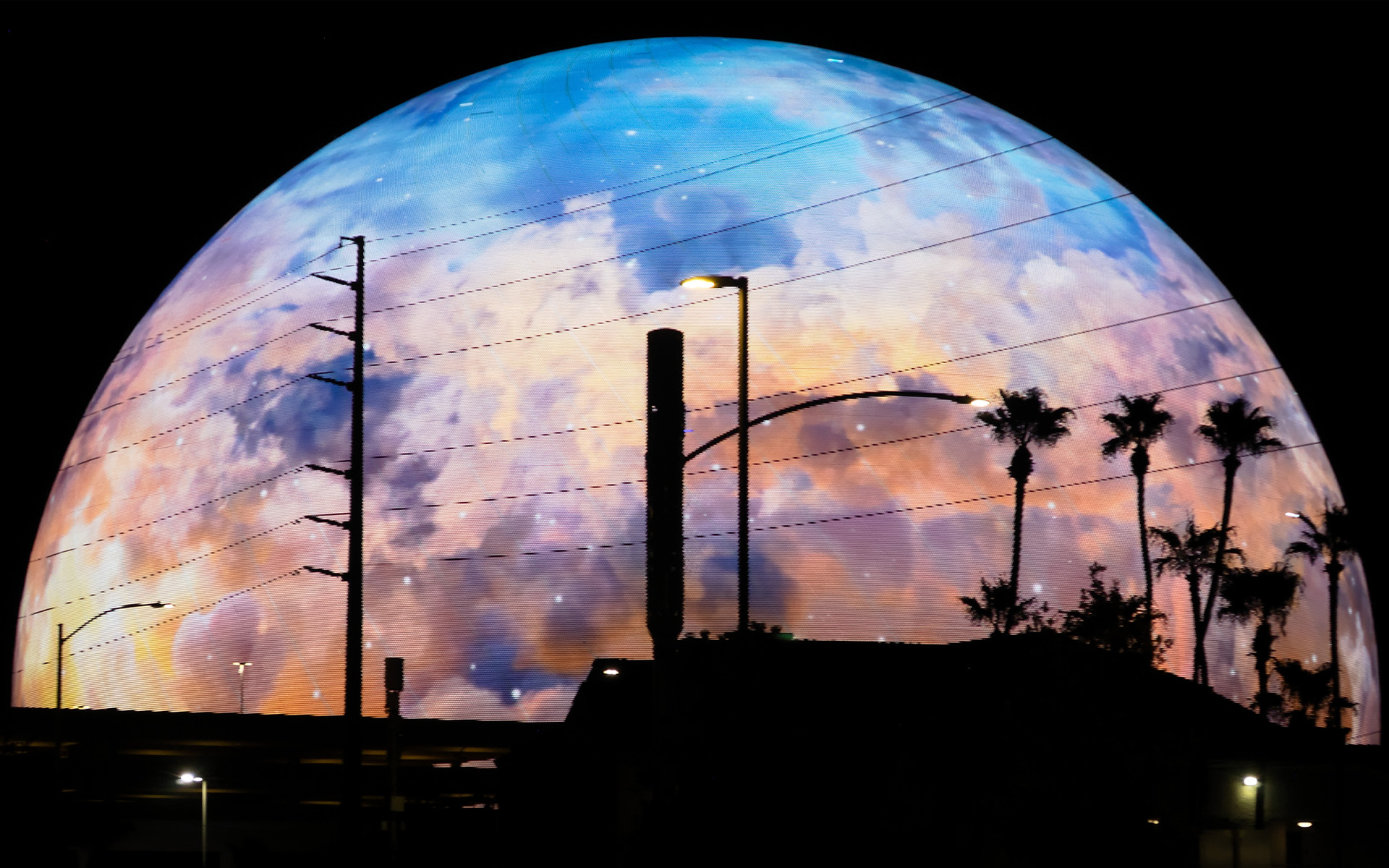
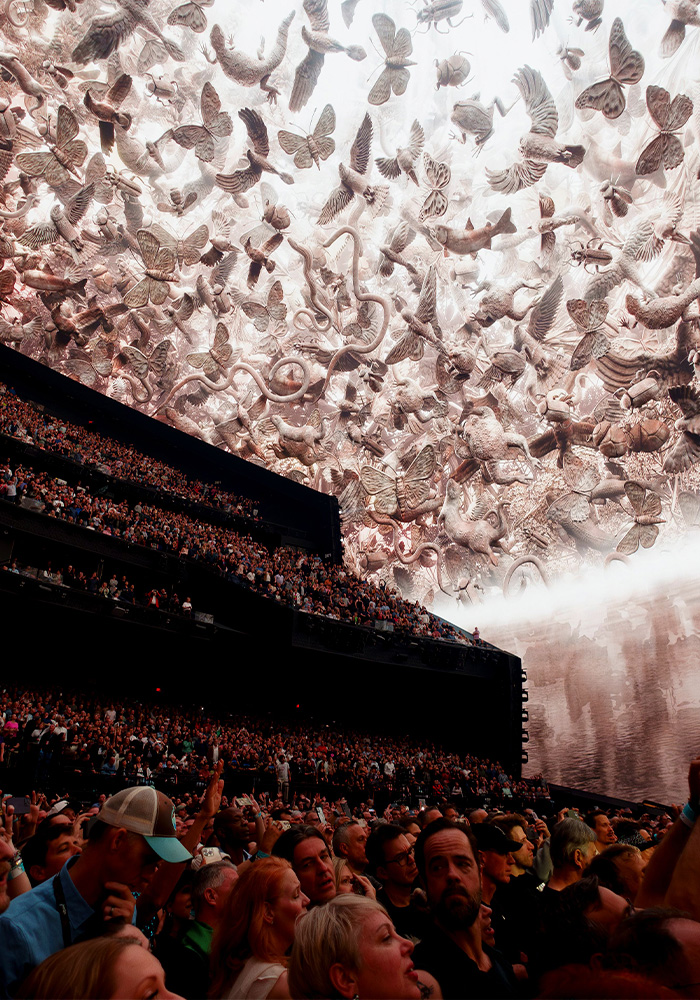
The interior of Las Vegas Sphere is one large screen
At its peak, Sphere needs 28 megawatts of power
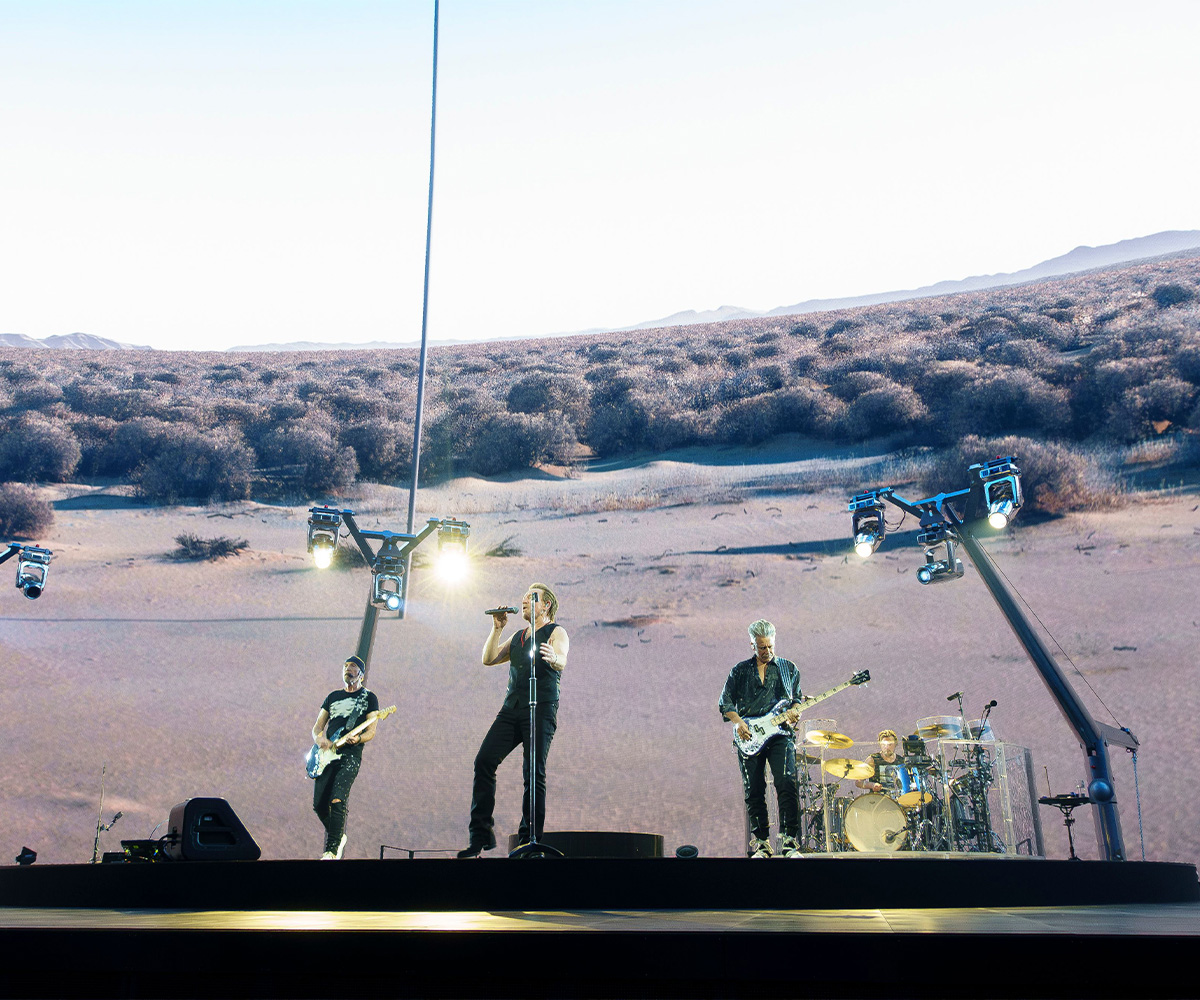
U2 perform at Las Vegas Sphere
For sites that have the holy trinity of space, good infrastructure and lots of money, the idea of hosting a Sphere of their own is tempting. The logistics and dynamics detailed here make potential sites like Abu Dhabi a natural fit and a K-Pop Sphere in South Korea a tangible possibility. For the rest of the world, it may be a case of what happens in Vegas stays in Vegas.
Plans for Sphere in London met with a confused response. Originally planned for Stratford in east London, the former Olympic park area seemed a natural fit for a Sphere. It is already home to the ABBA Voyage arena, has good transport infrastructure and strong hotel and hospitality capacity.
However, plans for Sphere London were rejected by the London Mayor, citing light pollution as one of the major factors that would impact the quality of life for those residents in the immediate surroundings. Light and distraction have also been cited by Formula 1 drivers on the Las Vegas circuits as an issue when the exterior display is in full animation mode, drawing their focus away from the road and the race.
Wanting to explore the full implications of turning down the application, the Department for Levelling Up, Housing and Communities called in the plans for further review. By this point, MSG Entertainment pulled the plug on the project, declaring how “extremely disappointing” it was that Londoners would “not benefit from the Sphere’s groundbreaking technology and the thousands of well-paying jobs it would have created”.
While Sphere has found its natural home in Las Vegas, its future beyond North America remains uncertain. With staggering levels of energy consumption, its light shows are not beautiful to all beholders.
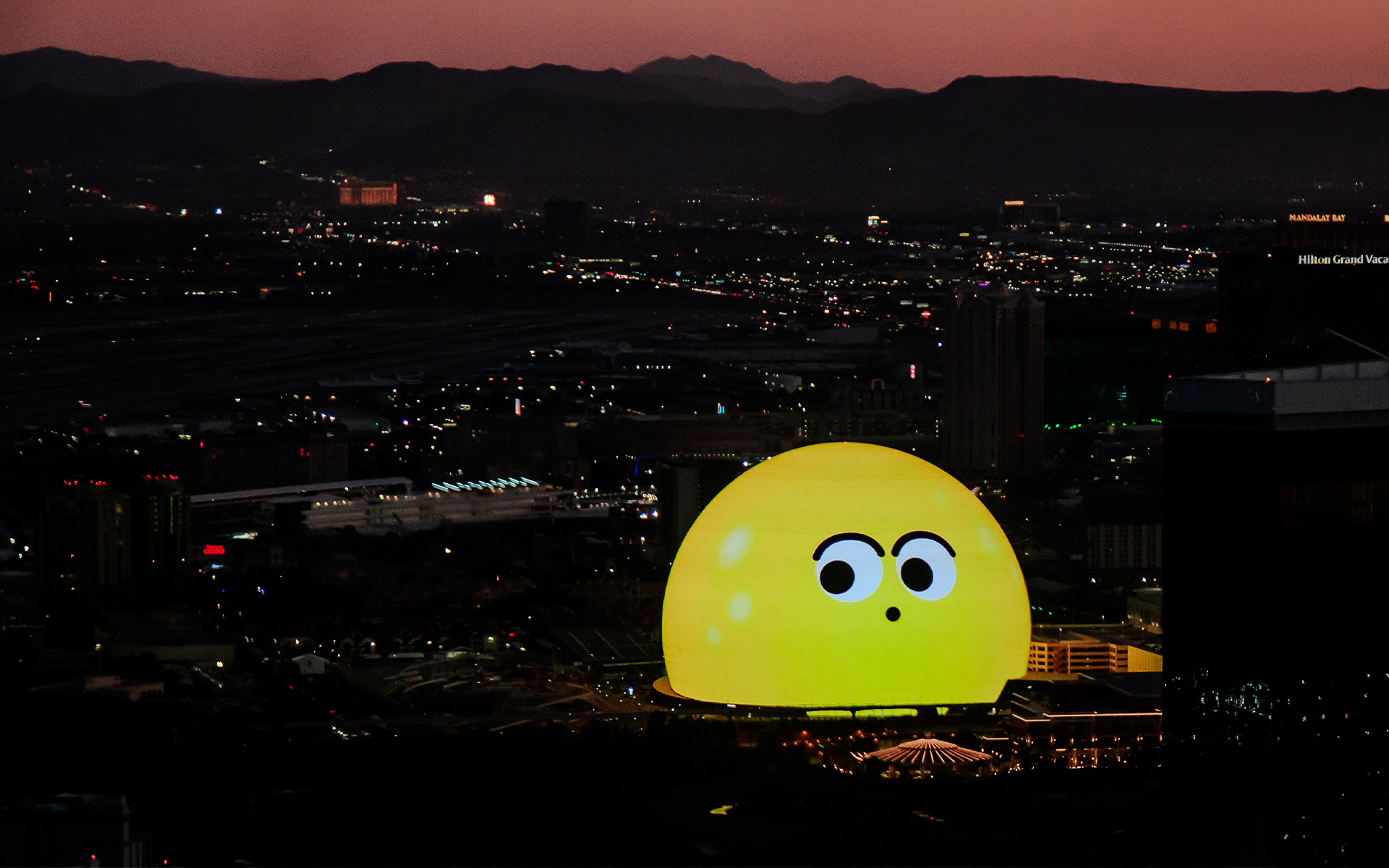
MODUS
Kieran Dhunna Halliwell 29 April 2024
MODUS
Modus staff 25 April 2024